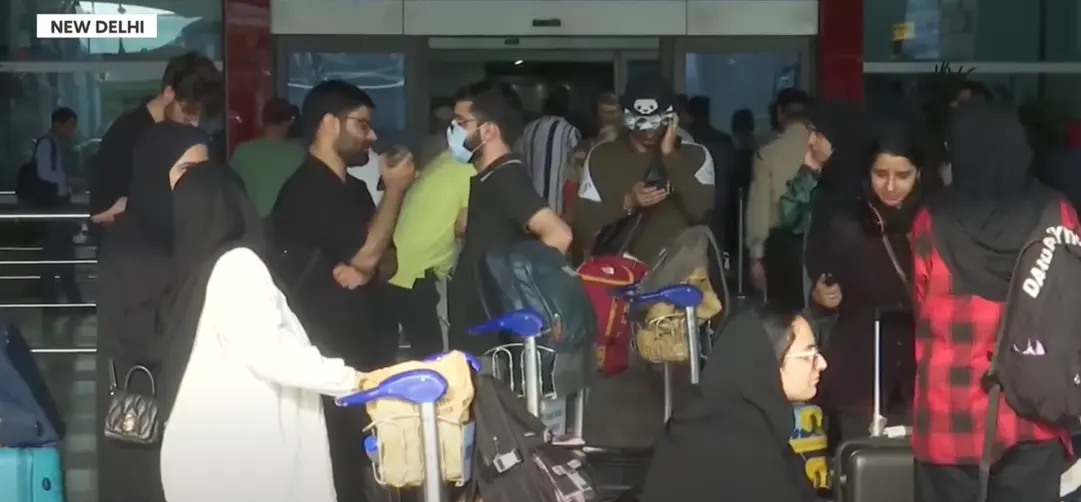
For the 110 Indian students who landed in Delhi in the early hours of June 19, the journey home was nothing short of miraculous
“We Saw Missiles Fall”: Students Recount the Horror in Iran
From Bombs to Safety- For the 110 Indian students who landed in Delhi in the early hours of June 19, the journey home was nothing short of miraculous. Many had witnessed the terrifying sights of missiles streaking across the sky, drones crashing nearby, and neighborhoods reduced to rubble. The escalating conflict between Iran and Israel had turned once-bustling university towns into war zones.
“We could see missiles. Our neighborhood was bombed. We were terrified,” said Mir Khalif, an MBBS student who had been studying in Tehran. His voice trembled as he recalled the chaos. “I hope we never see those days again.”
Another student, Ali Akbar, described a chilling moment during their bus journey to the Armenian border. “We saw a missile and a drone fall right in front of us. Tehran has been destroyed. The situation is worse than what the news shows.”
These weren’t isolated accounts. Students from across Iran, Tehran, Urmia, Isfahan shared similar stories of fear, sleepless nights, and desperate calls home. Parents waited anxiously outside Delhi’s Indira Gandhi International Airport, some in tears, others holding miniature Indian flags, grateful for their children’s safe return.
Operation Sindhu: From Bombs to Safety – A Lifeline from the Government
In response to the deteriorating situation, the Indian government launched Operation Sindhu, a high-priority evacuation mission. The Ministry of External Affairs, in coordination with Indian embassies in Iran and Armenia, orchestrated a complex rescue plan. Students were picked up directly from their dormitories and transported to the Armenian border, where they boarded a special flight to Delhi.
“We didn’t expect this level of support,” said Sheikh Afsa, a fourth-year student from Jammu and Kashmir. “The government literally came to our doors. They helped us at every step. We are so grateful.”
Minister of State for External Affairs Kirti Vardhan Singh personally welcomed the students at the airport. “We have more planes ready. Our missions are working 24/7. As the situation evolves, we will continue evacuating every Indian citizen,” he assured.
The operation was not just about logistics, it was about empathy. Students were housed in safe accommodations in Armenia, provided with food, medical care, and constant updates. “They treated us like family,” said Ghazal Rashid, another evacuee. “We felt protected every step of the way.”
A Nation’s Gratitude and a Plea for the Remaining
While the return of 110 students brought immense relief, the mission is far from over. Thousands of Indian nationals, including over 10,000 medical students, remain in Iran. Many have been relocated to safer zones, but communication remains patchy, and the fear is ever-present.
Parents like Haider Ali, whose son Maaz was among the evacuees, expressed both joy and concern. “We are happy our children are back. But many are still stuck. We urge the government to bring them home too.”
The Jammu and Kashmir Students’ Association echoed this sentiment, thanking Prime Minister Narendra Modi and External Affairs Minister S. Jaishankar for their swift action, while urging continued efforts to evacuate those still stranded.
As the dust settles over Iran’s conflict zones, the stories of these students serve as a powerful reminder: behind every geopolitical crisis are human lives, dreams interrupted, and families waiting with bated breath. Operation Sindhu has not only saved lives, it has restored faith in the promise that no Indian will be left behind.
Stay updated with the latest news on Rapido Updates. Keep yourself updated with The World, India News, Entertainment, Market, Gadgets, Sports, and many more..